By 1973, tightening emission regulations were beginning to impact American performance cars. However, there were still some offerings in the market that offered respectable performance. The ’73 Plymouth Road Runner was one of these vehicles, and this one looks like it could be a straightforward project car. It is a one-owner classic, and its rust problems are so minor that they could be addressed in a home workshop. The owner has decided to part with the Plymouth, so he has listed it for sale here on Barn Finds Classifieds. It is located in Lake Wales, Florida, and the owner has set the sale price at $26,000.
The Road Runner is finished in Formal Black, and it features the contrasting factory White stripes. The paint holds an impressive shine for its age, although it is beginning to show some deterioration. It isn’t in urgent need of a repaint, and there’s no reason why the buyer couldn’t continue to drive it as an original survivor. If they choose to perform a cosmetic refresh, the owner includes a fresh set of correct stripes to give the buyer a headstart. The panels are surprisingly straight, and this is particularly noteworthy when you consider how readily Black paint can expose even the most minor panel blemish. That leads us seamlessly to the question of rust, and it is here that the news remains positive. There is some present, but it is confined to a single spot behind the passenger door. It is insignificant, and the buyer could tackle this with a small patch. With floors and a frame that are rock solid, the grinder and welder aren’t going to be working overtime on this classic. The trim and chrome appear to be very nice, and I can’t spot any problems with the glass.
Buyers in 1973 had a few choices when it came to deciding what engine to slot into their shiny new Road Runner. While the 318 offered acceptable power, the 340ci V8 provided an excellent compromise between weight and performance. That is what we find under the hood of this car, and it is a numbers-matching unit that would’ve produced 240hp when it rolled off the production line. Bolted to this is a 3-speed TorqueFlite transmission, while power steering and power brakes are also part of this package. The owner says that this 340 is a dealer upgrade, so that means that it should not only punch out more ponies, but it should be capable of improving on the original 16-second ¼-mile ET. The owner says that the V8 runs extremely well, so some bitumen burning isn’t far away for this classic.
The moment that I saw this photo, my fingers began to itch. Below those aftermarket slipcovers are seats that are free from rips and tears and upholstered in white vinyl to match the door trims. The owner admits that everything needs a deep clean, and this has got me going. I can’t think of anything more satisfying than spending a few days in a home workshop with this interior and some high-quality cleaning products. I suspect that the results could be pretty spectacular. When you look at the state of the trim, the dash, and the carpet, there’s nothing that requires replacement. There haven’t even been any aftermarket additions beyond the radio/cassette player and graphic equalizer mounted under the dash. As well as a console that houses the shifter, this interior is also equipped with factory air conditioning and a pushbutton radio.
When you take an overview of this 1973 Road Runner, it seems that returning it to a factory-fresh state is an undertaking that the buyer could potentially achieve in a home workshop. It has a single spot of rust, a good interior in desperate need of nothing beyond a deep clean, and a healthy 340ci V8 under the hood. That means that it will potentially take more time than money to achieve a stunning result, which has to make it an attractive proposition for an enthusiast on a limited budget. Even if you have the ready cash lying around to allow someone else to perform the work, this is still a classic that is worth a closer look.
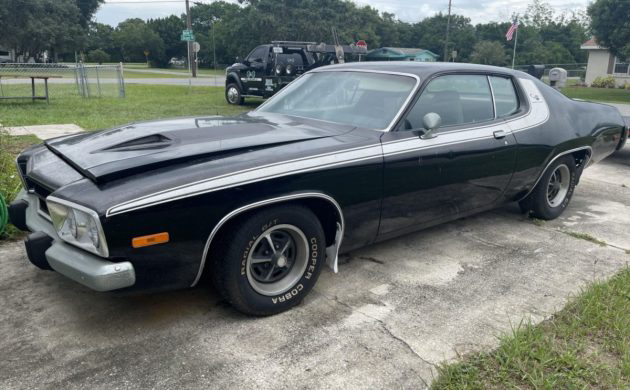
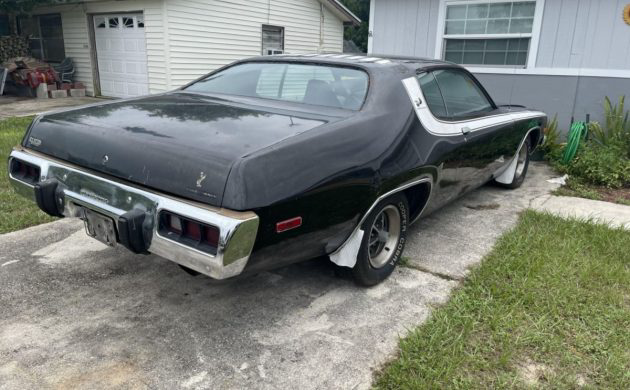
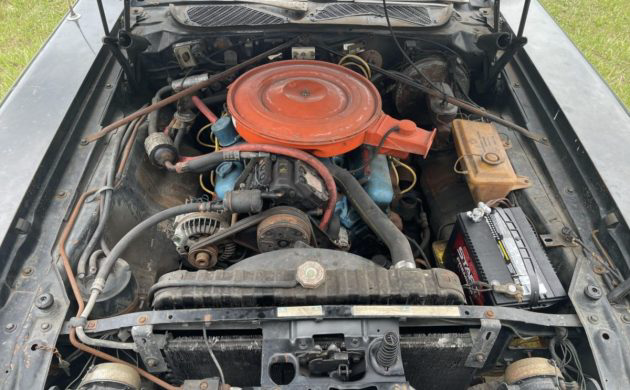
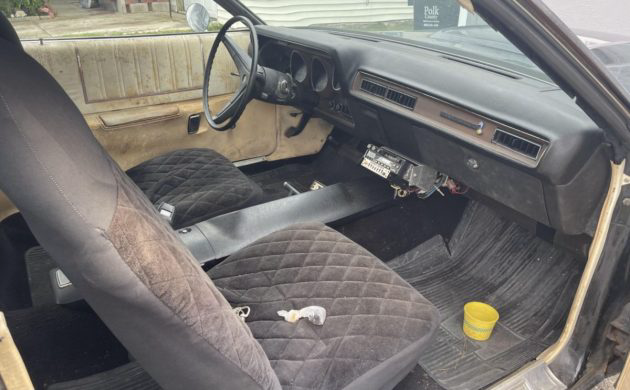
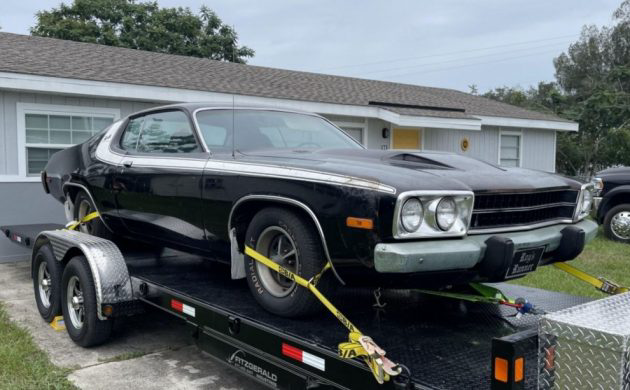


I don’t understand the appeal of the car on trailer picture.
That there is a Fitzgerald trailer – one of the best car trailers for the money you can buy. Tilt bed, removable fenders, and an enclosed winch. Made in Tennessee.
It makes that car look good. It makes anything look good.
Ask the man that owns one…
Factory mud flaps?
Those were a very popular upgrade back then so they are probably period correct but I doubt factory.
Some details on the “dealer upgrade” would be useful. Was it originally a 318 that the dealer upgraded to a 340, or were there modifications made to a factory-installed 340?
The H in the VIN shows it was born with a 340, so I’m also confused on why it was a dealer upgrade…maybe it got blowed up and it was swapped under warranty…
He wasn’t clear but, I think he meant it was an optional upgrade over the standard 318 that was the base offering. Actually, it was a huge upgrade as far as performance goes. 340’s were screamers, way more so than the 360 that replaced it which was, basically, a boat anchor.
To much money
*Too
Ugly seat covers. Never understood those.
If they did their job, who cares? Throw them away and enjoy the fact that the seats aren’t trashed underneath.
Pretty nicely equipped 340 car with PS/PB/AC. But nothing says “period correct” like an under dash cassette deck and graphic equalizer!
Good looking RR, but never liked the front end like the 71/72. Tell me something mopar bunch is the rest of the body the same as the 71/72 ?
Oof. A thousand dollars a ton.
Sure, i will bite. Way overpriced. And its not even cherry. It needs thousands of dollars of work and if mint condition its still barely a 15k car.
My sane opinion, carry on.
A much-nicer ’73 340/auto Road Runner has been for sale on Craigslist in northern WI (Hurley, specifically) for several months. The seller can’t get $17,500 out of that car, so I reckon this one’s between $18K-$20K over its market value considering the required restoration work.
There’s not a lot of love for this generation at the moment, particularly the small-block variants and even less so for awfulmatics. Unlike the E-bodies, you could still get a big-block/ 4-speed B-body through the end of ’74, even if it was “only” the 400.